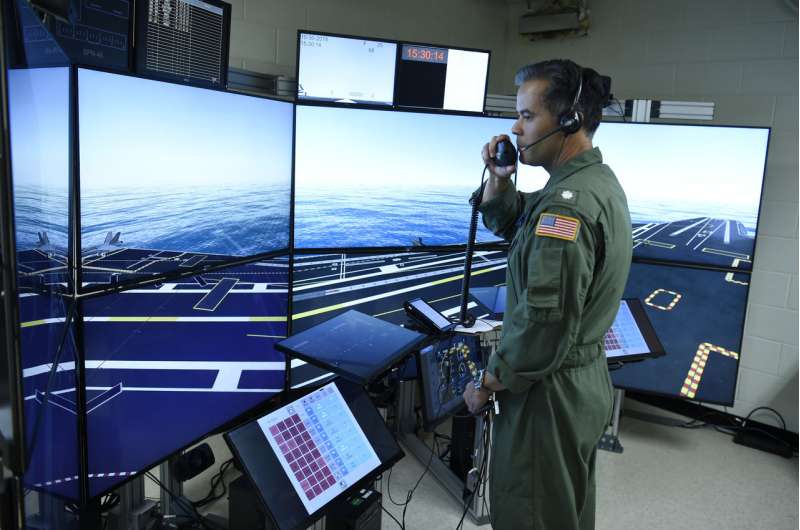Virtual training for aircraft carrier flight deck crews

One of the most dangerous environments in the United States Navy is the deck of an aircraft carrier. Catapult systems that can remove limbs, furious engines, whipping propellers and high winds create a hectic environment.
The driving force behind all of these activities is helping a pilot land an aircraft on a short slab of pitching steel, in the middle of the ocean.
Although pilots are the stars of the show, they could not accomplish their missions without the support of flight deck crews, who are responsible for safely launching and recovering aircraft.
Previously, flight deck crews could only conduct training while on the job. But thanks to a collaborative effort between the Office of Naval Research Global (ONR Global) TechSolutions program and the Naval Air Warfare Center Training Systems Division (NAWCTSD), a new technology called Flight Deck Crew Refresher Training Expansion Packs (TEPs) will deliver cutting-edge training to Sailors and Marines.
The system is an expandable framework of game-based immersive 3-D technologies that allows for individual, team or multi-team training events.
"Having a simulator that allows us to tie the full flight deck team with all the key decision-makers, supervisors, catapult crew and watch stations together—and train in a virtual environment—is just fantastic," said Cmdr. Mehdi Akacem, Air Boss aboard the Navy's newest aircraft carrier, USS Gerald R. Ford (CVN 78).
The first three TEPs will help a carrier's Primary Flight Control team; the Landing Signal Officer (LSO) team; and the Catapult Launch Team.
The idea for the Flight Deck Crew Refresher Training came from an LSO instructor at Naval Air Station OCEANA. TechSolutions—ONR Global's rapid-response science and technology program that develops prototype technologies to address problems voiced by Sailors and Marines, usually within 12 months—listened to the idea and found the right people to make it happen.
Courtney McNamara, a computer scientist and the Advanced Gaming Interactive Learning Environment (AGILE) Team Lead at NAWCTSD, helped develop the technology.
"All of the ship systems, characters, flight deck crew characters and team members can be both driven synthetically or by live players," said McNamara.
The training stations simulate real-life with the aid of virtual environments. Even the flight patterns that occur during the simulations are based on real flight patterns conducted by pilots.
The training can simulate normal operations and emergency conditions, exposing deck crews to a wide array of real-world scenarios.
"This is really the first example I've seen of extending the value of a simulation environment to such an essential, tangible thing as a carrier flight deck," said Akacem. "It's really a need we've had for years, one we've been able to get by without because of the grit and will of our Sailors and Marines."
Provided by Office of Naval Research




















